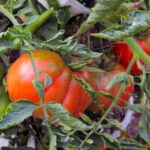Are you interested in starting a backyard vegetable garden in the Philippines? Philippine backyard vegetable gardening is a popular and rewarding activity that allows individuals to grow their own fresh produce. From the vibrant greenery of lettuce to the colorfulness of tomatoes, there are many options for bountiful harvests. In this article, we will explore the world of Philippine backyard vegetable gardening by discussing its benefits, selecting the right vegetables, preparing soil, dealing with pests and diseases, and more.
As an archipelago located in Southeast Asia, the Philippines has a tropical climate that provides a suitable environment for growing various types of vegetables. In recent years, there has been a growing interest in backyard vegetable gardening due to its numerous benefits. In this section, we will delve into the advantages of cultivating your own vegetables in the Philippines and how it can positively impact your health, environment, and even your budget.
When it comes to Philippine backyard vegetable gardening, choosing the right vegetables to grow is crucial. Not all vegetables thrive in the same conditions and not all may be suitable for your specific location.
In this article, we will provide essential tips on selecting the right vegetables based on your preferences and available resources. Whether you are aiming for leafy greens, root crops or vine-bearing fruits, we’ve got you covered with valuable insights on making informed decisions for your garden.
The Benefits of Growing Your Own Vegetables in the Philippines
The Philippines is a country known for its rich agricultural heritage, and one way to fully embrace this legacy is by engaging in backyard vegetable gardening. There are numerous benefits to growing your own vegetables in the Philippines, not only for personal consumption but also for contributing to sustainable practices and promoting self-sufficiency.
One of the primary benefits of engaging in Philippine backyard vegetable gardening is the assurance of consuming fresh and organic produce. With concerns about pesticide residues on imported vegetables, growing your own ensures that you have full control over the cultivation process. This can lead to healthier and safer food options for you and your family.
Moreover, Philippine backyard vegetable gardening can also contribute to environmental sustainability. Growing your own vegetables reduces the carbon footprint associated with transporting produce from rural farmlands to urban centers. Additionally, adopting organic farming practices can help preserve the natural biodiversity of the region while minimizing soil degradation.
In addition to these environmental and health-related benefits, cultivating your own vegetables in a Philippine backyard garden can also lead to significant cost savings. With rising prices of commercially-produced vegetables, having a steady supply from your garden can substantially reduce grocery expenses. This practice can also serve as an alternative income source if you decide to sell surplus produce in local markets or directly to neighbors and community members.
| Benefits | Details |
|---|---|
| Fresh and Organic Produce | Engaging in backyard vegetable gardening ensures consumption of fresh and organic produce. |
| Environmental Sustainability | Growing your own vegetables reduces carbon footprint and helps preserve natural biodiversity. |
| Cost Savings | Cultivating your own vegetables can lead to significant cost savings compared to buying from commercial producers. |
Choosing the Right Vegetables for Your Philippine Backyard Garden
When starting a vegetable garden in the Philippines, it is important to choose the right vegetables that will thrive in the local climate and soil. Some of the best vegetables to consider for your Philippine backyard garden are okra, eggplant, bitter melon, string beans, tomatoes, and chili peppers. These vegetables are well-suited to the warm and humid conditions of the Philippines and can provide a bountiful harvest when properly cared for.
In addition to considering the climate, it is also important to think about what vegetables your family enjoys eating. There’s no point in growing vegetables that no one will eat. Consider incorporating both familiar favorites and new varieties to add excitement and diversity to your meals.
It’s also crucial to evaluate the space you have available for gardening. Some vegetables, such as squash and watermelon, require a lot of space to spread out, while others like lettuce and herbs can be grown in smaller containers. Make sure to plan your garden layout accordingly and take into account any vertical space that could be utilized for climbing plants like cucumbers or pole beans.
| Vegetable | Climate Suitability |
|---|---|
| Okra | Warm and humid |
| Eggplant | Warm and humid |
| Bitter Melon | Warm and humid |
By carefully selecting which vegetables to grow based on climate, taste preferences, and available space, you can ensure a successful and enjoyable experience with your Philippine backyard vegetable gardening.
Preparing Your Soil for Vegetable Gardening in the Philippines
When it comes to starting a successful Philippine backyard vegetable gardening, one of the most crucial steps is preparing the soil. The quality of the soil directly affects the health and productivity of your vegetables. Here are some tips for preparing your soil for vegetable gardening in the Philippines:
- Conduct a soil test: Before you start planting, it’s important to know the condition of your soil. A soil test will determine the pH level, nutrient content, and organic matter present in your soil. This information will help you make informed decisions about which amendments to add to improve your soil quality.
- Amend the soil: Based on the results of your soil test, you may need to amend your soil with organic matter such as compost or well-rotted manure to improve its structure and fertility. Adding these organic materials also helps retain moisture in the soil, which is especially beneficial in the hot and dry climate of the Philippines.
- Mulch the garden bed: Applying mulch to your garden bed can help regulate soil temperature, reduce water evaporation, suppress weed growth, and prevent erosion. Organic mulches like straw or chopped leaves can also decompose over time and contribute to the overall health of the soil.
By taking these steps to prepare your soil for vegetable gardening in the Philippines, you can create a fertile and healthy environment for your crops to thrive. Remember that healthy plants start with healthy soil, so investing time and effort into this aspect of gardening will pay off in bountiful harvests of fresh vegetables.
It is worth noting that Philippine backyard vegetable gardening offers numerous benefits beyond just providing fresh produce. By growing your own vegetables at home, you can reduce your carbon footprint by cutting down on transportation emissions associated with store-bought produce.
Additionally, having a thriving backyard garden can serve as an educational tool for children and help connect them with nature and where their food comes from. With proper care and sustainable practices, Philippine backyard vegetable gardening can be both rewarding and environmentally friendly.
Tips for Successful Vegetable Gardening in the Philippine Climate
Successfully growing vegetables in the Philippine backyard requires some knowledge and understanding of the unique climate of the country. The tropical climate of the Philippines brings both challenges and opportunities for vegetable gardening. Here are some tips for ensuring success in your Philippine backyard vegetable gardening.
The first tip is to choose vegetables that thrive in the tropical climate. Some vegetables that do well in this type of climate include ampalaya (bitter gourd), eggplant, tomatoes, okra, and squash. These vegetables are well-suited to the warm temperatures and high humidity typically found in the Philippines.
Another important tip is to provide adequate water and sunlight for your vegetable garden. In the Philippine climate, it is essential to ensure that your plants receive enough water, especially during dry seasons. Additionally, make sure your vegetable garden gets at least 6-8 hours of sunlight each day. Proper watering and sunlight will help your vegetables grow healthy and strong.
Lastly, implementing sustainable practices such as composting, using organic fertilizers, and practicing crop rotation can help maintain a healthy vegetable garden in the Philippines. These practices not only benefit the environment but also contribute to the long-term success of your garden.
By following these tips tailored to the unique Philippine climate, you can ensure a successful vegetable gardening experience right in your own backyard. With proper care and attention, you can enjoy a bountiful harvest of fresh and nutritious vegetables grown with love and care using sustainable practices specific to the Philippine environment.
Dealing With Common Pests and Diseases in Philippine Backyard Vegetable Gardening
Dealing with common pests and diseases is an inevitable part of maintaining a productive vegetable garden in the Philippines. The warm and humid climate in the country provides an ideal environment for various pests and diseases to thrive, making it essential for gardeners to be vigilant in protecting their precious crops. Fortunately, there are several effective measures that can be taken to prevent and manage these issues, allowing backyard vegetable gardeners to enjoy a bountiful harvest.
Identifying Common Pests and Diseases
One of the first steps in dealing with pests and diseases in Philippine backyard vegetable gardening is being able to identify them correctly. Some common pests that plague vegetable gardens in the Philippines include aphids, caterpillars, snails, and slugs.
On the other hand, common diseases that affect vegetables in this climate include powdery mildew, bacterial wilt, and leaf spot. By learning how to recognize the symptoms of these pests and diseases early on, gardeners can take swift action before the situation escalates.
Natural Pest Control Methods
In line with embracing sustainable practices, many Philippine backyard vegetable gardeners opt for natural pest control methods to protect their crops. One popular approach is companion planting, where certain plants are grown together to repel pests or attract beneficial insects.
Additionally, creating habitats for natural predators such as ladybugs and lacewings can help keep pest populations in check without the use of harmful chemicals. Encouraging biodiversity within the garden ecosystem can ultimately contribute to a healthier and more balanced environment for plants to thrive.
Disease Prevention and Management
To prevent diseases from spreading within a vegetable garden in the Philippines, it is important to practice good sanitation measures such as removing infected plant debris and properly disposing of them. Adequate spacing between plants is also crucial for promoting air circulation, which can help reduce the risk of fungal diseases.
Moreover, using disease-resistant cultivars when possible and avoiding overwatering can further minimize the likelihood of encountering debilitating plant illnesses. By combining preventive strategies with attentive monitoring, Philippine backyard vegetable gardeners can effectively manage pest and disease issues while reaping the rewards of their hard work.
Harvesting and Maintaining Your Vegetable Garden in the Philippines
Once you have successfully planted and nurtured your Philippine backyard vegetable garden, it is important to know the proper techniques for maintaining it and ensuring a bountiful harvest. Here are some essential tips to help you maintain and harvest your vegetable garden in the Philippines:
1. Regular watering: Ensure that your vegetables receive an adequate amount of water, especially during the dry season in the Philippines. Be mindful of the soil moisture and water your plants accordingly. Consider investing in drip irrigation systems or soaker hoses to efficiently water your garden.
2. Weed control: Keep an eye out for weeds and remove them regularly to prevent competition for nutrients and water. Consider using mulch to suppress weed growth and maintain soil moisture in your vegetable garden.
3. Harvesting at the right time: It’s crucial to harvest your vegetables at the optimal time to enjoy their peak flavor and nutrition. Research the specific harvesting times for each type of vegetable in your Philippine backyard garden to ensure a successful harvest.
4. Soil maintenance: Regularly check the condition of your soil and make necessary amendments such as adding organic matter or fertilizer as needed. Healthy soil is essential for thriving plants in Philippine backyard vegetable gardening.
5. Pest management: Stay vigilant for signs of pests and diseases in your vegetable garden. Implement organic pest control methods such as companion planting, using natural predators, or making homemade remedies to tackle common pests without harming the environment.
By following these simple guidelines, you can effectively maintain and harvest a productive vegetable garden in the unique climate of the Philippines while enjoying a bountiful supply of fresh, nutritious produce from your own backyard.
Sustainable Practices in Philippine Backyard Vegetable Gardening
Composting and Organic Fertilizers
One of the key sustainable practices in Philippine backyard vegetable gardening is the use of composting and organic fertilizers. Instead of relying on chemical-based fertilizers, which can be harmful to the environment and human health, gardeners in the Philippines are encouraged to create their own compost using kitchen scraps, yard waste, and other organic materials. This not only reduces waste that goes to landfills but also provides a rich source of nutrients for your vegetables.
Water Conservation
With the Philippines experiencing both rainy and dry seasons, it’s crucial for backyard vegetable gardeners to practice water conservation. Collecting rainwater through barrels or other containers can help ensure a steady supply of water during dry periods. Additionally, using mulch around your plants can help retain soil moisture and reduce the need for frequent watering. By being mindful of water usage, gardeners can contribute to conserving this precious resource while still nurturing their crops.
Companion Planting and Natural Pest Control
In Philippine backyard vegetable gardening, sustainable practices also include companion planting and natural pest control methods. By strategically planting certain vegetables together, you can naturally repel pests or attract beneficial insects that help control pest populations.
This reduces the need for chemical pesticides that can harm not only pests but also helpful organisms like bees and butterflies. Utilizing natural pest control methods such as introducing predator insects or using homemade insecticidal soaps can also help maintain a healthy balance within your garden without resorting to harmful chemicals.
By incorporating these sustainable practices into Philippine backyard vegetable gardening, gardeners can not only enjoy a bountiful harvest but also contribute to environmental conservation efforts. From utilizing composting and organic fertilizers to practicing water conservation and natural pest control methods, embracing sustainability in gardening is essential for the long-term health of our planet and communities.
Conclusion
In conclusion, embracing the beauty and benefits of vegetable gardening in the Philippines can be a highly rewarding and sustainable practice. By growing your own vegetables in your backyard, you not only have access to fresh and nutritious produce but also contribute to reducing your carbon footprint. The keyword “Philippine Backyard Vegetable Gardening” has increasingly become a popular trend as more people recognize the value of sustainable living and self-sufficiency.
Furthermore, by actively participating in Philippine backyard vegetable gardening, you are also promoting food security within your community. The ability to grow your own food ensures that you have access to a stable source of nutrition, especially during times of economic uncertainty or disruptions in the food supply chain. Additionally, sharing your knowledge and surplus produce with neighbors and local organizations can help strengthen community ties and foster a sense of camaraderie among fellow gardeners.
In essence, Philippine backyard vegetable gardening is not just a practical way to produce food-it is also a form of art that allows individuals to connect with nature and experience the joy of nurturing life from seed to harvest. As we continue to embrace sustainable practices and prioritize environmental stewardship, cultivating a vegetable garden in the Philippines becomes an essential part of our contribution towards a healthier planet for future generations.
So, why not start exploring the world of Philippine backyard vegetable gardening today?

If you’re looking to get into vegetable gardening, or are just looking for some tips on how to make your current garden better, then you’ve come to the right place! My name is Ethel and I have been gardening for years. In this blog, I’m going to share with you some of my best tips on how to create a successful vegetable garden.





